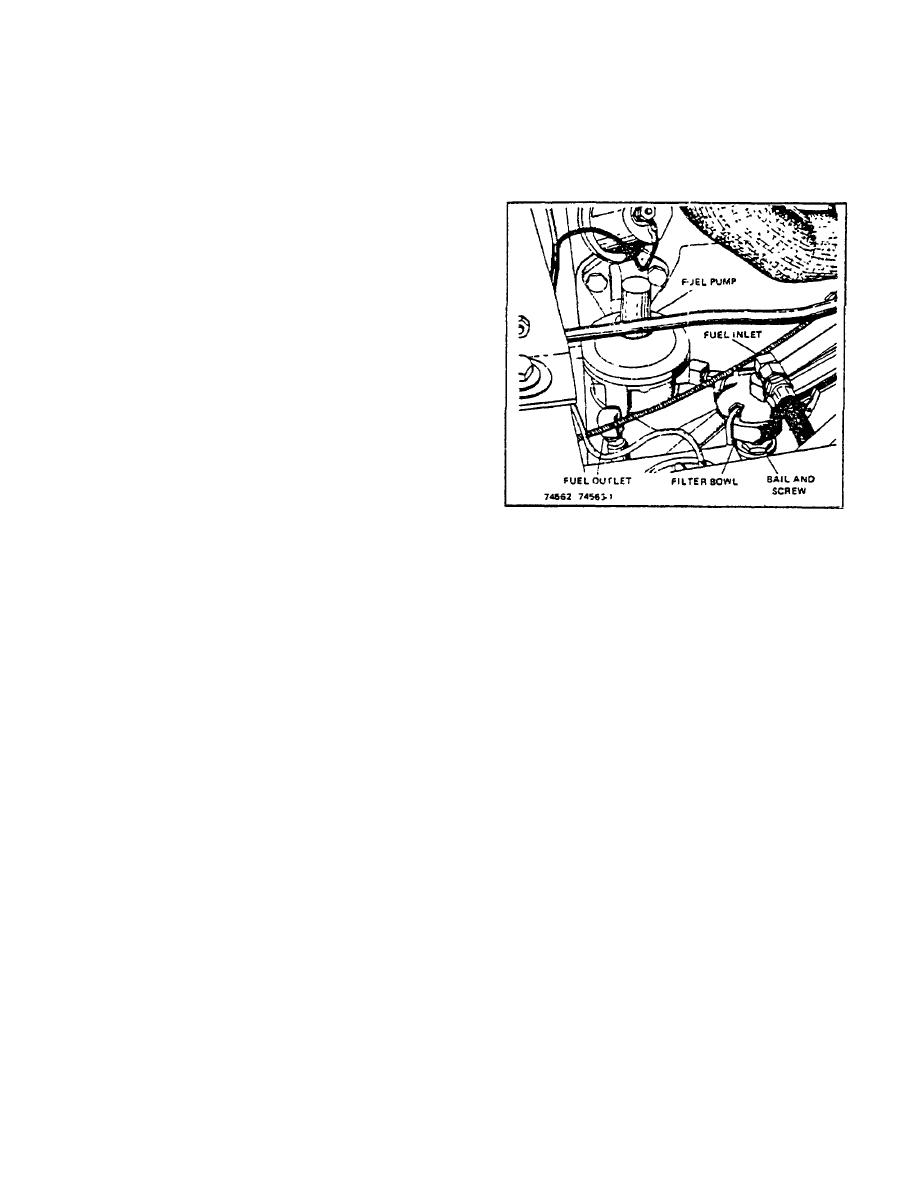 |
|||
|
|
|||
|
Page Title:
TOPIC 3. FUEL PUMP AND FUEL FILTER |
|
||
| ||||||||||
|
|
 TM 10-3930-644-14&P
TOPIC 3. FUEL PUMP AND FUEL FILTER
A. DESCRIPTION
e. Make certain all pump cover screws are
tight.
The fuel pump is a mechanical diaphragm type with an
attached strainer and sediment bowl. The pump is
mounted on the side of the engine and is operated by an
eccentric on the engine camshaft.
Fuel from the tank enters the strainer sediment bowl on
the suction stroke of the pump and is forced to the
carburetor on the pressure stroke. Action is controlled
by two valves in the cover assembly.
On ACP model trucks the fuel strainer is connected
directly to the tank and fuel is delivered to the fuel pump
through a connecting hose (Fig. 1-3).
B. SERVICE AND INSPECTION
Quite often engine malfunctioning can be traced to a
clogged fuel pump; therefore, periodically clean
sediment bowl and strainer screen.
Loosen capnut, swing clamp wire to one side, and
Figure 3-1. Fuel Pump and Filter Mounting (ACC Model
remove bowl. Thoroughly clean bowl and screen. If
Trucks)
there is excessive dirt on the screen or in the bowl,
check fuel tank and source of supply.
f. Test pump for proper operating pressure by
disconnecting outlet line and attaching test
If pump is supplying insufficient fuel, engine will stall or
gauge to fuel cutlet port. Run engine at 1800
falter. Check the following:
r.p.m. on fuel remaining in carburetor and note
pressure on gauge.
Pressure should be
1. Make sure there is fuel in the tank and the shut-
between 1-1/2 P.S.I. minimum and 2-1/4 P.S.I.
off valve at sediment bowl is fully open.
maximum. Pressure below minimum indicates
excessive wear. It may also indicate a ruptured
2. Disconnect fuel outlet line from pump. Remove
diaphragm, worn, dirty or gummy valves and
high tension wire from ignition coil and turn the
seats. Any of the above require removal of the
engine over several revolutions. If fuel spurts
pump for replacement.
from pump outlet, it indicates pump, gas lines
and fuel tank are not at fault.
If pump is supplying too much fuel, it will drip from the
carburetor, or the engine will not idle smoothly, and will
3. If little or no fuel flows, perform the following:
be hard to start. Check the following:
a. Check for leaking gasket at sediment bowl
1. Perform Step f above for testing the pump for
or top cover of the pump.
proper operating pressure.
b. Remove and
clean
fuel
screen
in
2. A pressure above maximum indicates too tight a
sediment bowl.
diaphragm or too strong a diaphragm spring.
Poor riveting on a diaphragm assembly may
c. Inspect copper fuel line for restrictions.
also result in too high a pressure due to fuel
Blow out with compressed air or replace 'f
seeping between diaphragm layers, bulging the
damaged.
diaphragm and causing it to act as if It were
stretched too tightly.
The above requires
d. Inspect flexible fuel line for breaks or a
removal of the fuel pump for replacement.
porous condition. Replace if necessary.
R-123-1
3-57
|
|
Privacy Statement - Press Release - Copyright Information. - Contact Us |